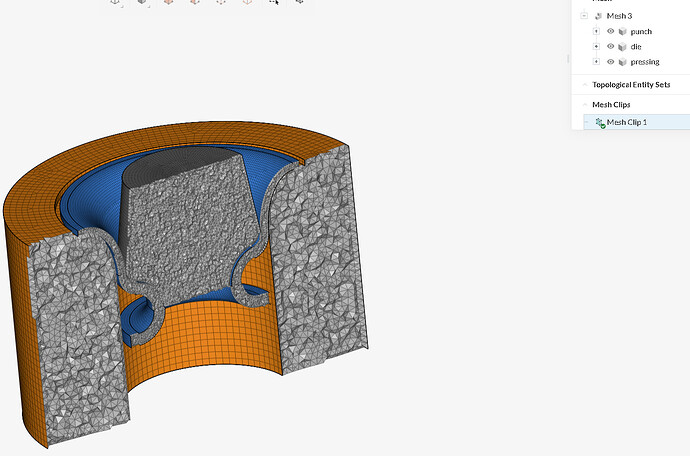I am trying to model punching out a pressed brass fixing through a aperture (die).
I am expecting the thinner upper section of the brass to deform in preference to the thicker inner lower section allowing it to be pushed through the die. My aim is to understand the force I need to push the fixing through and to balance the sizes/thicknesses of the inner and outer sections so this happens rather than jamming up or rupturing.
At first I was experiencing singularities that we stopping the simulation but now it fails with a error that is very difficult to see what is wrong. It sounds like if may be a software issue:
" ------! ! <A><JEVEUX_08>! ! ! !
The GLOBALE base was created with version 0.00.00! ! and you use version 14.02.00! ! ! !
Council:! ! In general, the base can only be used with the version of the code that built it,! ! catalogs of items are stored in the base when it is created, and some of the structures! ! based on their description, which may vary from version to version. ! ! ! ! ! ! This is an alarm. If you don’t understand the meaning of this! ! alarm, you can get unexpected results! ! !-------------------------------------------------------------------------------------------------------! !-------------------------------------------------------! ! <EXCEPTION><DVP_2>! ! ! ! Digital error (floating point exception). ! ! ! ! ! ! ! ! There is probably an error in the programming. ! ! Please contact your technical assistance. ! !-------------------------------------------------------! … __stg1_txt5 # ------------------------------------------------------------------------------------------ Order No: 0001 Type Concept"
This is the project:
There is an earlier version that never got past the singularity issue (perhaps not detailed enough)
this is based on the project:
I need help understanding if I am using the completely wrong simulation type or if not where I am needing to alter the setting to get this working.
Many thanks
MBC

